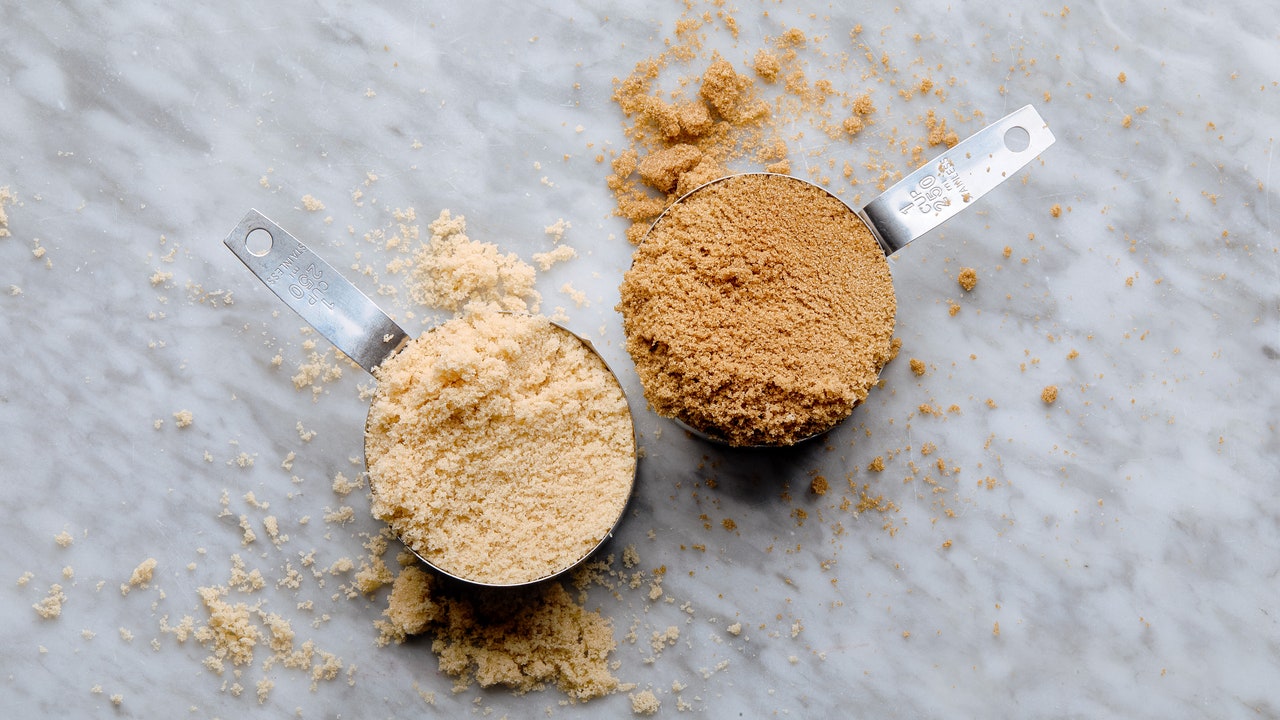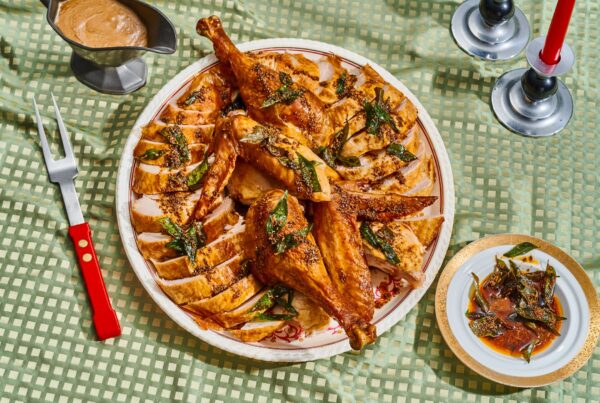With everything else that’s on your mind, and in your shopping cart, it’s understandable if you don’t always have multiple varieties of brown sugar on hand. Household items like laundry detergent and toilet paper probably take priority. And yet, you may have noticed while some recipes use light brown sugar, others use dark brown sugar—and few explain why. On behalf of busy grocery store shoppers everywhere: What gives?
Consider this your cheat sheet to understanding the differences between light brown sugar and dark brown sugar—and whether you really need both (or either) in your pantry.
What is brown sugar?
Let’s take a step back to establish what brown sugar is, exactly. Refined brown sugar is simply granulated white sugar with some amount of molasses, a byproduct of sugar cane production, reintroduced to the mix. It has a higher moisture content than white sugar, which is why it’s often used to create chewy textures in baked goods.
Unrefined or less-refined brown sugars include turbinado sugar and demerara sugar—commonly labeled as “raw sugar” although they are boiled and processed—as well as muscovado sugar and products like jaggery and piloncillo. These undergo less processing and tend to have darker colors, stronger flavors, and chunkier crystals than refined brown sugars as a result. If any of these are required for a recipe, they’ll be mentioned by name.
The difference between light and dark brown sugars:
The amount of molasses present determines whether brown sugar is considered dark or light. Dark brown sugars contain nearly twice as much molasses as light brown sugars (also called golden brown sugar). Generally, dark varieties contain about 6.5% molasses versus the 3.5% found in lighter ones, which gives dark brown sugar both a deeper color and a stronger flavor with more potent caramel and toffee notes.
Can you swap light brown sugar for dark (and vice versa)?
The good news is that light and dark brown sugar are (usually) interchangeable. If you swap one for the other, you’re not going to ruin your brown-sugar brownies, crumble, or gingerbread cookie recipe. But, even though you can substitute light brown sugar for dark (and dark for light) they’re not exactly equal:
Using dark brown sugar when a recipe calls for light will give your dish a darker color and a more robust molasses flavor. In baking recipes, the swap can affect the texture of the final product too. Because of the ways that molasses’s acidity reacts with baking soda, using light brown sugar (which has less molasses and therefore less acidity) in place of dark might result in a denser crumb, due to less rise or spread. This probably isn’t something you’ll notice unless you’re conducting a side-by-side test of the same batch of baked goods. But, if your chocolate chip cookie recipe (or your chocolate chipless one) doesn’t turn out exactly how you expected, that might be one reason why.
Source link










